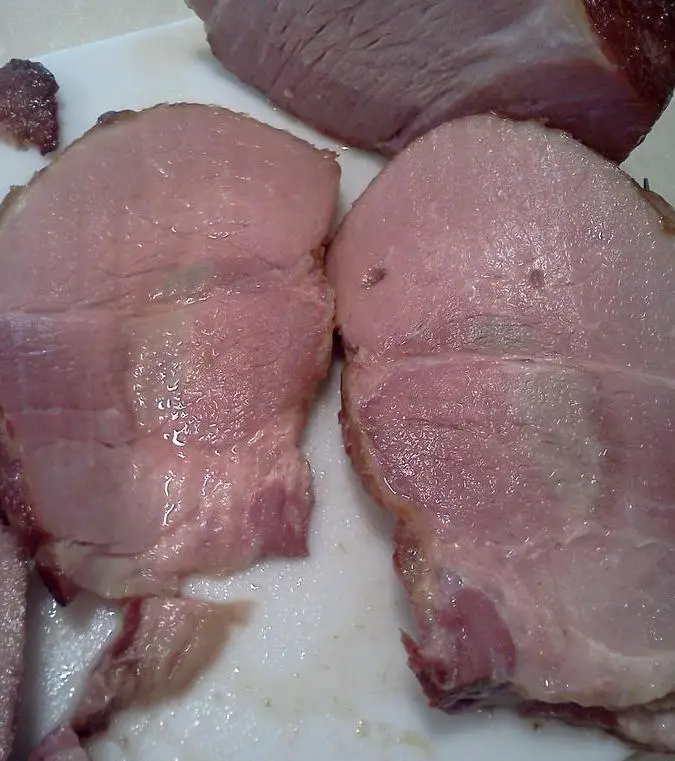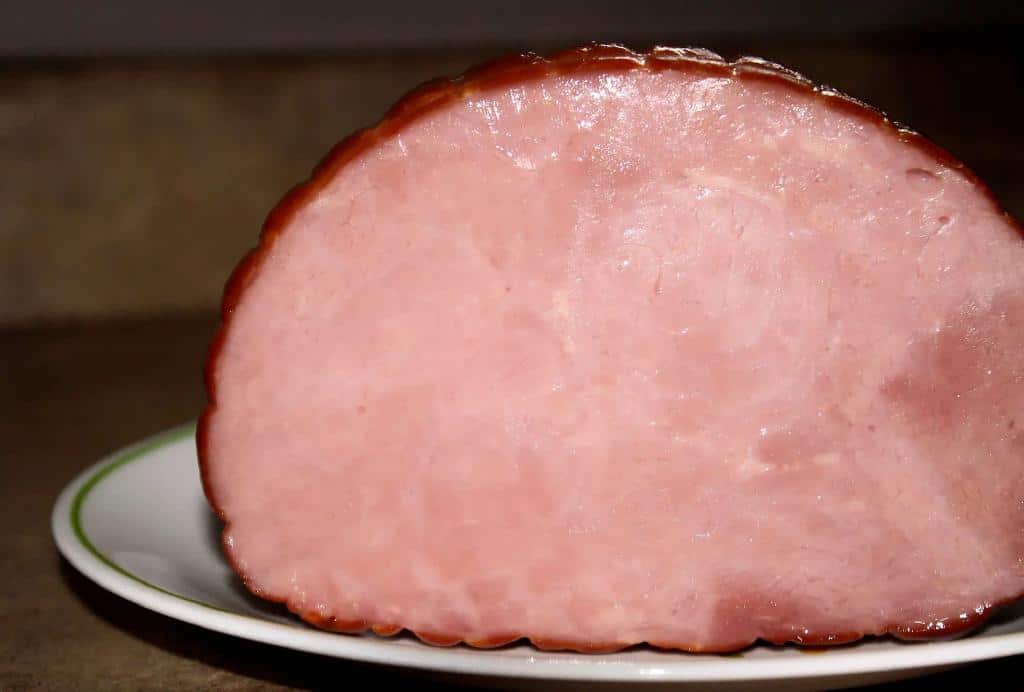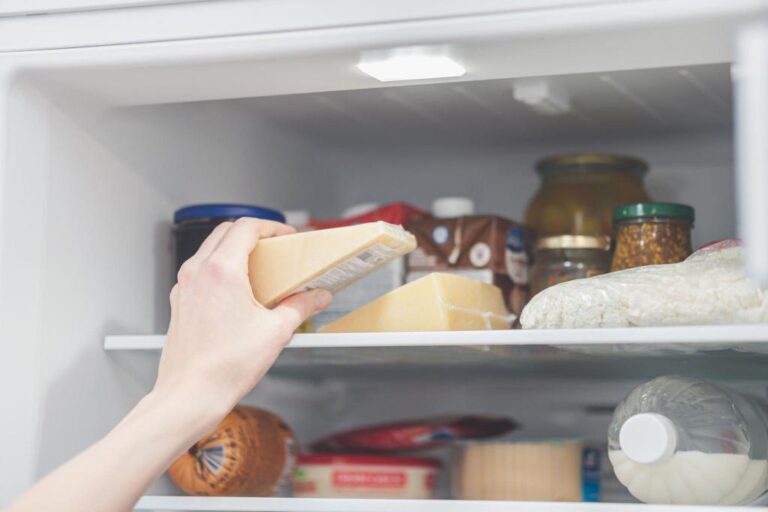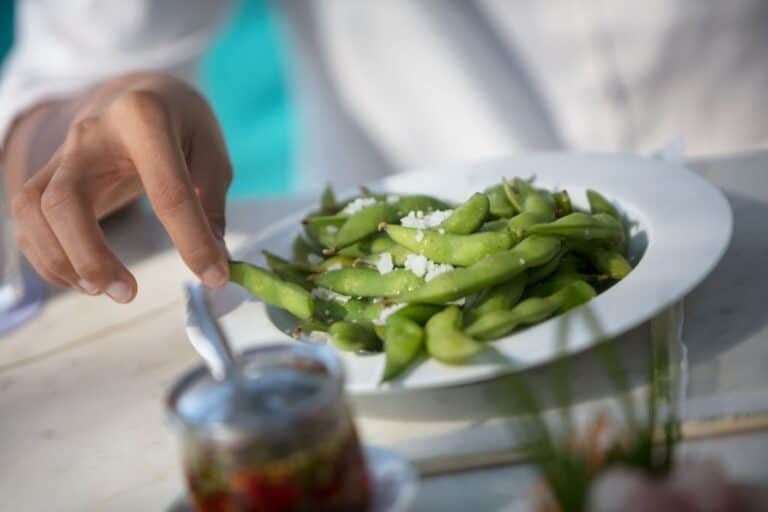The Ultimate Guide to Cooking a Raw Ham on the Bone

Master the art of preparing a raw ham on the bone with our expert tips and tricks. Start cooking like a chef!
Cooking a raw ham on the bone is an art form that elevates any meal from ordinary to extraordinary. Picture this: a marbled raw ham sits on your kitchen counter. Its bone hints at the rich flavors within.
In this guide, we will dig into the details of preparing and cooking a raw ham well. We will unlock the secrets to tender meat and great smells. They will have your guests begging for more.
Are you a seasoned chef looking to refine your skills? Or a culinary novice eager to impress? Mastering the art of cooking a raw ham on the bone will surely take your cooking to new heights. So, roll up your sleeves and sharpen your knives. Let’s start a tasty journey. It will be filled with tempting textures and delicious flavors.
Introduction to Cooking a Raw Ham on the Bone
A raw ham on the bone refers to a cut of pork from the hind leg of the pig that has not been cooked. It typically includes the bone, which adds flavor and helps retain moisture during the cooking process. This type of ham is often cured and may be smoked or unsmoked, depending on the desired flavor profile.
Cooking a ham on the bone offers several benefits. The bone acts as a natural roasting rack, allowing heat to circulate evenly around the meat and ensuring it cooks more evenly. Additionally, the bone imparts flavor to the meat as it cooks, enhancing its taste and richness.
Furthermore, raw ham on the bone provides versatility in cooking methods. Whether you prefer roasting, smoking, or slow cooking, the bone adds stability and helps maintain the ham’s shape during cooking. This lets you experiment with techniques. You can use them to reach your desired level of doneness and flavor.
Preparing the Ham

One important thing to do before cooking a raw ham on the bone is to make sure it is fully thawed if it is frozen. It is safer and takes longer to thaw your ham in the fridge, which helps keep its quality.
To thaw the ham, just put it in its packaging on a tray or in a pan to catch any drips. Then, put it in the fridge for about 24 hours for every 5 pounds of meat. This slow thawing method stops bacteria. It also makes the meat juicier and tastier when cooked.
Once your ham is no longer frozen, it is time to start thinking about how to season it. There are a lot of different ways to make your ham taste better. Garlic, rosemary, and mustard glazes are a classic pair. Bourbon-molasses and pineapple-ginger marinades are stronger flavors that go well together. You can try marinade meat in soy sauce for more flavourful taste.
You could try using herbs, spices, and sauces to fit the flavor to your tastes. Whether you like a mix of sweet and savory notes or want a bit of heat. With a few simple but powerful ingredients, you can take your raw ham on the bone from ordinary to extraordinary by using a variety of seasonings.
| Read: Why Is My Ham Mushy? |
Cooking Methods: Oven, Slow Cooker, and Smoker
Baking in the oven, using a slow cooker, or opting for a smoker each offer unique benefits when preparing a raw ham on the bone.
When baking in the oven, it’s essential to maintain precise temperature control to ensure even cooking and optimal flavor infusion. Preheating the oven to around 325°F (162°C) and allowing ample time for the ham to roast slowly will yield succulent results. The oven’s gentle heat lets the meat tenderize slowly. It also forms a tasty caramelized exterior.
Conversely, utilizing a slow cooker offers convenience without compromising on taste. Cooking at lower temperatures helps retain moisture and intensify flavors. It happens as the ham simmers gently for several hours. This method is ideal for busy days when you desire a hands-off approach but still want juicy, fork-tender ham.
But, if you crave the unmistakable smoky flavor in your dish, a smoker can elevate your cooking.
By carefully adjusting the smoker’s temperature settings and incorporating aromatic wood chips like hickory or applewood, you can imbue your ham with rich layers of complex smokiness that tantalize taste buds.
Mastering the Art of Cooking a Raw Ham on the Bone
When it comes to cooking a raw ham on the bone, precision and attention to detail are key. Cooking a raw ham on the bone is a culinary adventure that requires precision and attention to detail. Follow these steps to ensure your ham turns out perfectly cooked and bursting with flavor:
- Preheat Your Cooking Vessel: Whether you’re using an oven, smoker, or slow cooker, preheating is crucial. This step ensures even cooking and helps retain the ham’s juicy tenderness.
- Prepare a Flavorful Glaze or Marinade: Elevate the taste profile of your ham by preparing a delicious glaze or marinade. Whether sweet or savory, this element adds depth and complexity to each bite.
- Carefully Place the Ham: When placing the ham in your cooking vessel, do so with gentle precision. This ensures even cooking and optimal flavor infusion throughout the meat.
- Season and Glaze: Experiment with different herbs, spices, and sauces to tailor the taste to your liking. This personal touch adds creativity and enhances the final dish.
- Follow Cooking Guidelines: Adhere closely to recommended cooking times and temperatures. This guarantees that your ham emerges tender, moist, and bursting with delectable flavors.
By following these steps, you can master the art of cooking a raw ham on the bone and create a dish that is sure to impress.
| Related: How Do You Keep Ham From Turning Brown? |
Checking Doneness
To ensure your raw ham on the bone is cooked to perfection, it’s crucial to employ reliable methods for checking its doneness. While some may rely solely on timing, a more accurate approach involves monitoring the internal temperature of the meat.
Ham should ideally reach an internal temperature of 145°F (63°C) to be safe for consumption, but if you prefer a slightly firmer texture, aim for around 150°F (65°C). A good meat thermometer can be a game-changer. It helps you cook hams that are juicy and full of flavor.
Apart from relying on numbers alone, visual cues can also guide you in determining if your ham is ready. A beautifully cooked ham will boast a caramelized crust with deep golden hues while still retaining moistness inside.
Look out for the glistening sheen of rendered fat on the surface and the slight pullback of any exposed bones as signs that your ham is nearing gastronomic perfection.
Serving Suggestions: Elevating Your Presentation
When it comes to serving your perfectly cooked raw ham on the bone, presentation is key. Impress your guests. Master slicing techniques that enhance the look. They also ensure great flavor in every bite.
Slicing against the grain makes the meat more tender and tasty. It breaks down the muscle fibers, resulting in succulent meat that melts in your mouth. Remember to make clean cuts with a sharp knife for uniform slices that showcase the natural beauty of the ham.
Pairings with Side Dishes: Finding Harmony on Your Plate
A beautifully roasted ham on the bone can steal the show. But, picking great side dishes can take your meal to new heights. Balance the rich ham with light sides. Try citrus salads or roasted veggies.
The flavors and textures will contrast. They will create a harmonious symphony on your plate. This mix offers a well-rounded dining experience. It delights all the senses. Don’t fear to try different pairings. They create unique combinations that lift each dish. They also let the star ingredient shine.
Tips & Tricks
When it comes to cooking a raw ham on the bone, mastering the art of timing is crucial. One often overlooked step that can make a world of difference in the final result is allowing your cooked ham to rest before slicing into it. This rest period allows the meat’s juices to move, so each slice stays tender and juicy. It may be tempting to dive right into your cooked ham. But, wait for at least 15-20 minutes before serving.
Now, what do you do with those delicious leftover slices of ham? Storing them properly is key to preserving their flavor and texture. To keep your leftover ham fresh and flavorful, store it in an airtight container or wrap tightly in plastic wrap before refrigerating. For longer storage, consider freezing portions of ham for future use in soups, sandwiches, or casseroles. Properly stored leftovers can be just as tasty as the freshly cooked dish – so don’t let any precious morsels go to waste!
Conclusion
You have mastered cooking a raw ham on the bone. Now, it’s time to test your skills and wow your loved ones. You’ll make a mouthwatering centerpiece for your next gathering. Remember, patience is key when handling such a robust cut of meat trimming– slow and steady wins the race in achieving that perfectly tender texture. You can confidently navigate the process from start to finish. It ensures a delicious outcome every time.
In closing, keep experimenting with different flavor profiles, glazes, and accompaniments to tailor your ham to suit your personal preferences. Whether you prefer classic honey-glazed ham or are feeling adventurous with a bold mustard crust, don’t be afraid to get creative in the kitchen.
With practice and persistence, you’ll soon become a pro at cooking raw ham on the bone. You’ll delight taste buds and make lasting culinary memories.






